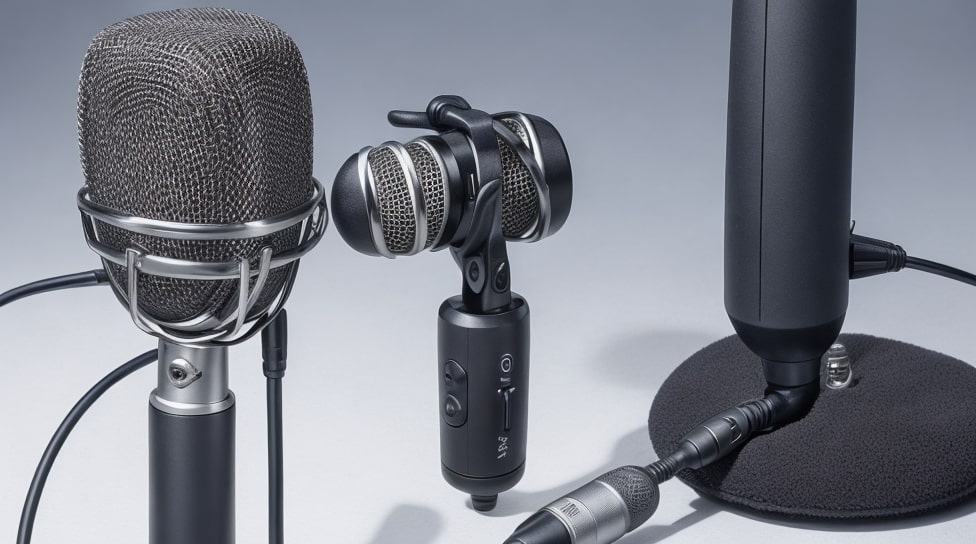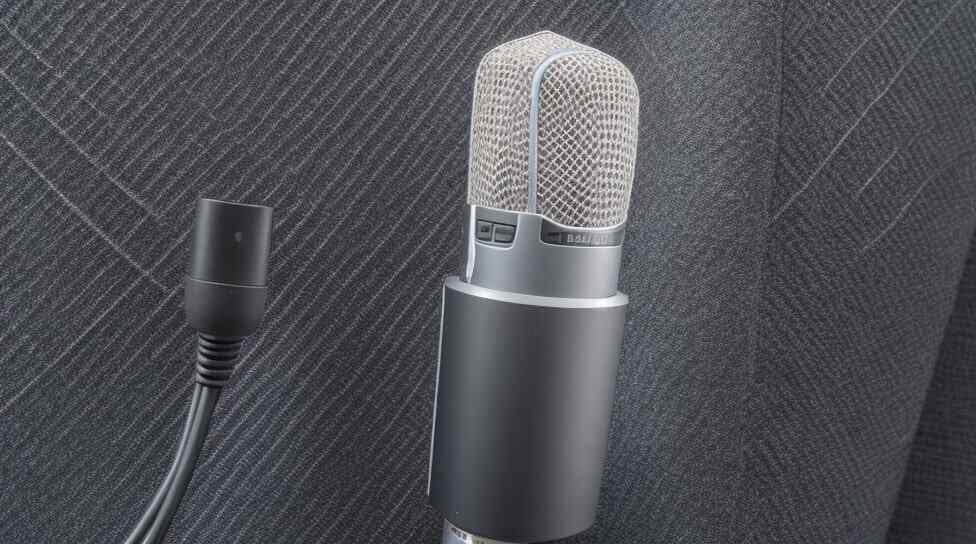You’ve finally got your hands on a high-quality dynamic microphone, and you’re ready to record your next podcast episode or lay down some vocals for your latest track.
You connect your mic to the audio interface, and then you remember – oh no, the phantom power! Will Phantom Power Damage a Dynamic Mic?
It’s a question that has been asked by many audio enthusiasts, and today, we are going to unravel the mystery.
Decoding Phantom Power: A Beginner’s Guide

So, what exactly is phantom power? Phantom power is a method used to supply electrical power to microphones that require it to operate.
It is called ‘phantom’ because the power is sent through the same cable that the audio signal travels, making it invisible or ‘phantom.’
Phantom power is typically provided by audio interfaces, mixers, or standalone phantom power supply units.
The standard phantom power voltage is 48 volts DC, although some devices operate at lower voltages, such as 12 or 24 volts.
Condenser microphones, which are commonly used in studio recording, usually require phantom power to function.
This power is necessary to energize the microphone’s internal components, specifically the condenser capsule.
Microphone Varieties That Demand Phantom Power
Now that we have a basic understanding of what phantom power is, let’s discuss the types of microphones that require it.
As mentioned earlier, condenser microphones are the most common type of microphones that need phantom power.
These microphones have a diaphragm placed very close to a backplate, forming a capacitor.
When sound waves hit the diaphragm, it moves, causing variations in the distance between the diaphragm and the backplate.
This movement generates an electrical signal that corresponds to the sound.
To convert this electrical signal into an audio signal that can be recorded or amplified, the capacitor (diaphragm and backplate) needs to be energized, and this is where phantom power comes in.
It provides the necessary voltage to the microphone, allowing it to function correctly.
Another type of microphone that requires phantom power is the electret condenser microphone.
These microphones have a permanently charged backplate, so they don’t need as much power as regular condenser microphones.
However, they still require a small amount of power to operate the internal preamplifier, which is usually provided by a battery or phantom power.
Dynamic Microphones and Phantom Power: Demystifying the Science

Now, let’s talk about dynamic microphones and why they don’t need phantom power.
Dynamic microphones operate on a completely different principle than condenser microphones.
They use an electromagnetic induction principle, where a diaphragm is attached to a coil of wire, placed within the magnetic field of a magnet.
When sound waves hit the diaphragm, it moves, causing the coil of wire to move within the magnetic field, generating an electrical current.
This current is then transformed into an audio signal.
Since dynamic microphones generate their own electricity, they do not require an external power source like phantom power.
However, the question remains – will phantom power damage a dynamic microphone?
The good news is that, in most cases, phantom power will not damage a dynamic microphone.
Dynamic microphones are designed to be robust and handle a variety of situations.
Most dynamic microphones have a balanced output, which means that the phantom power voltage is applied equally to both sides of the audio signal, effectively canceling it out.
However, there are some exceptions. Some vintage or poorly designed dynamic microphones may be susceptible to damage from phantom power.
Also, if a microphone cable is damaged or wired incorrectly, it could potentially cause problems.
The Risks: Will Phantom Power Damage a Dynamic Microphone?

We’ve established that, generally speaking, phantom power will not damage a dynamic microphone.
However, there are always exceptions to the rule. As mentioned earlier, some vintage or poorly designed dynamic microphones may be susceptible to damage from phantom power. Additionally, damaged or incorrectly wired microphone cables could also cause issues.
It’s important to note that while most modern dynamic microphones are designed to handle phantom power, there is always a small risk involved.
If you are using an expensive or vintage microphone, it’s always best to err on the side of caution and avoid using phantom power unless absolutely necessary.
For a thorough understanding, consult the following articles on Best Quick Reviews:
Can I Use Shure Dynamic Microphone for Cello? Soulful Sounds
Is a Dynamic mic Better for Home Studio? Find Out Here!
Benefits of Using Dynamic Microphones Without Phantom Power
Dynamic microphones have several benefits that make them an attractive option for many audio applications.
First and foremost, they do not require an external power source to operate, making them incredibly versatile and easy to use in any situation.
This is particularly beneficial for live sound applications, where power sources may not be readily available.
Secondly, dynamic microphones are generally more robust and durable than condenser microphones.
They can handle high sound pressure levels without distortion, making them ideal for miking loud sound sources like guitar amplifiers or drums.
Lastly, dynamic microphones are usually more affordable than condenser microphones, making them a great option for beginners or those on a tight budget.
Do Dynamic Microphones Require Any Alternative Power Sources?
While dynamic microphones do not require phantom power, some specialized dynamic microphones may require an alternative power source.
For example, some dynamic microphones with active electronics, such as built-in preamplifiers or EQ circuits, may require a battery or external power supply to operate.
However, these microphones are relatively rare and are usually clearly marked by the manufacturer.
How to Determine if Your Microphone Needs Phantom Power

The easiest way to determine if your microphone needs phantom power is to check the user manual or the manufacturer’s website.
Most condenser microphones require phantom power to operate, while dynamic microphones generally do not.
If you are still unsure, you can perform a simple test. Connect your microphone to your audio interface or mixer and start speaking or playing an instrument.
If you can hear sound coming through your speakers or headphones, your microphone does not require phantom power.
If you cannot hear any sound, try turning on the phantom power and see if that makes a difference.
Sound Quality Comparison: Phantom Power vs. No Phantom Power
The use of phantom power does not directly affect the sound quality of a microphone.
However, there can be indirect effects on the sound quality depending on the type of microphone being used.
For condenser microphones, phantom power is necessary to energize the condenser capsule and power the internal electronics.
Without phantom power, a condenser microphone will not function at all, resulting in no sound.
For dynamic microphones, phantom power is not necessary and will generally not affect the sound quality.
However, as mentioned earlier, there are some specialized dynamic microphones with active electronics that may require power to operate optimally.
Practical Test: What Happens When You Use Phantom Power on a Dynamic Microphone?
To see the effects of phantom power on a dynamic microphone, you can perform a simple practical test.
Connect a dynamic microphone to an audio interface or mixer that provides phantom power. Make sure to use a well-maintained and correctly wired microphone cable.
Start by recording some audio without phantom power. Then, turn on the phantom power and record some more audio. Compare the two recordings and see if there is any noticeable difference in sound quality, noise level, or any other audio characteristics.
In most cases, you will not notice any difference in the recordings, as most dynamic microphones are designed to handle phantom power without any adverse effects.
However, if you notice any distortion, noise, or other audio anomalies, it is best to stop using phantom power immediately and consult the microphone’s user manual or the manufacturer for more information.
FAQs About Will Phantom Power Damage a Dynamic Mic
Which microphone can be destroyed by phantom power?
Phantom power can potentially damage ribbon microphones.
Ribbon mics have delicate, thin ribbons that can be easily destroyed by the voltage supplied by phantom power.
Will phantom power damage SM57?
No, phantom power will not damage an SM57 microphone. SM57 is a dynamic microphone, and it is designed to withstand phantom power without any harm.
Can I use 48V with a dynamic mic?
Yes, you can use 48V phantom power with a dynamic microphone like the SM57 or SM58. Dynamic mics are not affected by phantom power.
Will phantom power damage SM58?
No, phantom power will not damage an SM58 microphone. Like the SM57, the SM58 is a dynamic microphone and is safe to use with phantom power.
What is the weakness of a dynamic microphone?
The weakness of dynamic microphones is their lower sensitivity compared to condenser microphones.
They may not capture as much detail or require a stronger preamp for quiet sound sources.
Will phantom power ruin SM7B?
No, phantom power will not ruin an SM7B microphone. The SM7B is a dynamic microphone, and it can safely be used with phantom power.
Do dynamic microphones need phantom power?
No, dynamic microphones do not require phantom power to operate.
They generate a signal through electromagnetic induction and do not rely on external power.
Does SM57 need a Cloudlifter?
The SM57 does not require a Cloudlifter or additional inline preamp. It can work well with standard audio interfaces or mixers without needing extra gain.
Do dynamic mics need a preamp?
Dynamic microphones may benefit from a preamp to boost their signal, especially when recording quiet sources.
However, they don’t rely on phantom power, and some audio interfaces have built-in preamps.
What happens if you send phantom power to a ribbon mic?
Sending phantom power to a ribbon microphone can potentially damage or destroy it.
Ribbon mics are sensitive, and the voltage from phantom power can break the delicate ribbon element. Always check if your microphone requires phantom power before using it.
Conclusion
In conclusion, the general consensus is that phantom power will not damage a dynamic microphone. Modern dynamic microphones are designed to handle phantom power without any adverse effects.
However, it’s always best to be cautious, especially when using vintage or specialized microphones.
Always check the user manual or consult the manufacturer if you are unsure.
Remember, while phantom power is essential for condenser microphones, it is generally unnecessary for dynamic microphones and does not affect their sound quality.
Happy recording, and always be mindful of your equipment’s specific needs!
